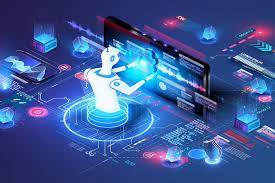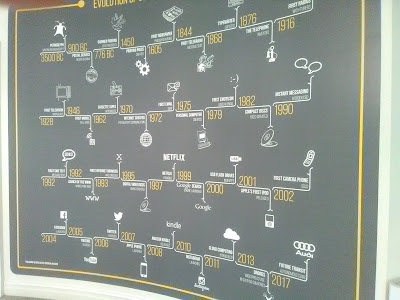Wednesday, November 30, 2022
Living in the Age of AI
Tuesday, November 15, 2022
The Diffusion of Innovations Theory
The Diffusion of Innovations Theory
Throughout technological innovations, we see patterns of popularities within each innovation. These patterns are used within the Diffusion of Innovations Theory to determine how an idea, behavior, or product spreads throughout a specific population or social system.
Five Categories of the Diffusion of Innovations Theory
The Diffusion of Innovations Theory consists of five stages, all of which describe the characteristics of the target population that is attracted product.
1- Innovators are the consumers who want to be the first to try the innovation and very little needs to be done to attract this group. This group makes up the people who are highly impressed with innovations and are eager to try out products when they are first announced.
2- Early Adopters are characterized as embracing change opportunities to try the new innovation, they do not need to be convinced however, they do enjoy adopting new ideas. These people are comfortable with new ideas and often embrace the new ideas with other populations.
3- Early Majority is the population that adapt before the average person but are not the first; they need evidence and some convincing that this innovation is worth it. Examples of ways to convince these people would be success stories, and effectiveness of the innovation to prove that it is convenient.
4- The Late Majority is the group of people that are skeptical of change and do not have much intention of trying new things; they require a lot of convincing on why this innovation is beneficial. Strategies to appeal this group include others personal experiences with the innovation.
5- The last group is known as Laggards, these people require a lot of convincing with statistics and reasoning as they are very traditional.
I would consider myself to be an early adopter for TikTok and my parents to be the late majority. My parents can easily be overwhelmed with technology and not open to trying out new platforms, however just last year both of them are actively using TikTok for entertainment as well as life hacks, recipes, and home projects.
Thursday, November 10, 2022
EOTO Presentation Impacts
EOTO Presentation Impacts
After watching all of the presentations I enjoyed learning about the history of some of the most revolutionizing technologies in communication. All of the presentations were executed very well and were very interesting and important to understand especially in a world full of technology. Like many, I use technology every single day and after watching the presentations I realized how recent the development of technology has revolutionized. The beginning of communication and the most recent inventions show how far we have come. All of the presentations worked well with each other and convey how technology is ever-changing and the possibilities are endless.
The most fascinating presentation in my opinion was the history of carrier pigeons. I never realized how significant it played a role in communication during that time. The whole concept of carrier pigeons as well as the process of how the pigeons were able to learn the routes was interesting. I loved this presentation because it shows the earliest times in the timeline of communication technology and the extreme development from this technique of communication to SMS messaging and emails.
I learned the most during the internet/WorldWideWeb presentation and found this technology development to be interesting as well. Since I never used the internet during its early times of operation, I never understood the process and how different it was to how it is today. I use the internet every single day and as we get more dependable on technology, the internet is starting to replace things such as books, dictionary, magazines, tv, etc.
Wednesday, November 9, 2022
Anti-War in News
Anti-War in News
In todays world, mainstream news consists of a lot of war news but we rarely see the side of anti-war news. Unpopular news websites provide us with important information that is crucial to politics especially during wartimes. Anti-War sources contain news and information on countries not wanting to go to war. These news sources are not commonly known and generates the question: "Why is this information not in the mainstream news?" Mainstream news is the most influential and popular news sources that consist of newspapers, television, and radio. However, the mainstream media seems to ignore information that is extremely vital to know as a citizen and voter of the United States of America. Some news sources are biased, however that should not mean that they don't serve their role in giving the public knowledge on affecting issues that are going on today.
It is possible that we don't see anti-war news in mainstream because they want us to believe that going to war is the only option. Wars can bring political advantages such as economic growth, technological advancements, and victory.
Most people believe that mainstream media is reliable news. However, the news is biased and tends to make matters more dramatic. Mass media nowadays fights to be most relevant and constant news source so they can be the best. People also believe everything they see and hear and without facts to back it up, the statements in the news are meaningless. To research and feel confident on your knowledge, websites like Anti-War and The American Conservative, provide sides of the story you don't see on the mainstream news. Social media has also become very influential for news and fake news spreads quickly. Which is important not to trust or believe everything you see.



















